Abstract
1. Reactivation kinetics of the rapid and slow inward currents in ventricular fibres have been assessed by studying the maximum rate of rise ((dV/dt)max) of the action potential upstroke and the duration of the plateau in progressively earlier premature responses. Reactivation of the slow inward current was also studied by voltage clamp technique in sheep and pig ventricular trabeculae.
2. The time constant of recovery of (dV/dt)max was voltage dependent and increased from less than 20 msec when the resting membrane potential was more negative than -80 mV to more than 100 msec when the resting membrane potential was between -65 and -60 mV. Similar results were obtained in Purkinje fibres. These results suggest that the time constant for reactivation is slower than the time constant for inactivation of the rapid inward current system by at least one order of magnitude.
3. The time constant of recovery of plateau duration was also voltage dependent and increased from 30 to 70 msec as the membrane potential was changed from -85 to -60 mV.
4. The reactivation time constant of the slow inward current determined by voltage clamp experiments were similar to the results obtained by analysis of plateau duration. At potentials less negative than -60 mV the time constant of reactivation became progressively longer. Unlike reactivation time constants of (dV/dt)max, the time constants of reactivation of the slow inward current were similar to the time constants of inactivation.
5. Our results indicate that (a) in premature action potentials, time as well as voltage are important determinants of (dV/dt)max in myocardial and Purkinje fibres, (b) the kinetics of reactivation of the rapid inward current in cardiac fibres are different from those in nerve and (c) plateau duration of premature action potentials in ventricular myocardial fibres is largely determined by the kinetics of reactivation of the slow calcium inward current.
Full text
PDF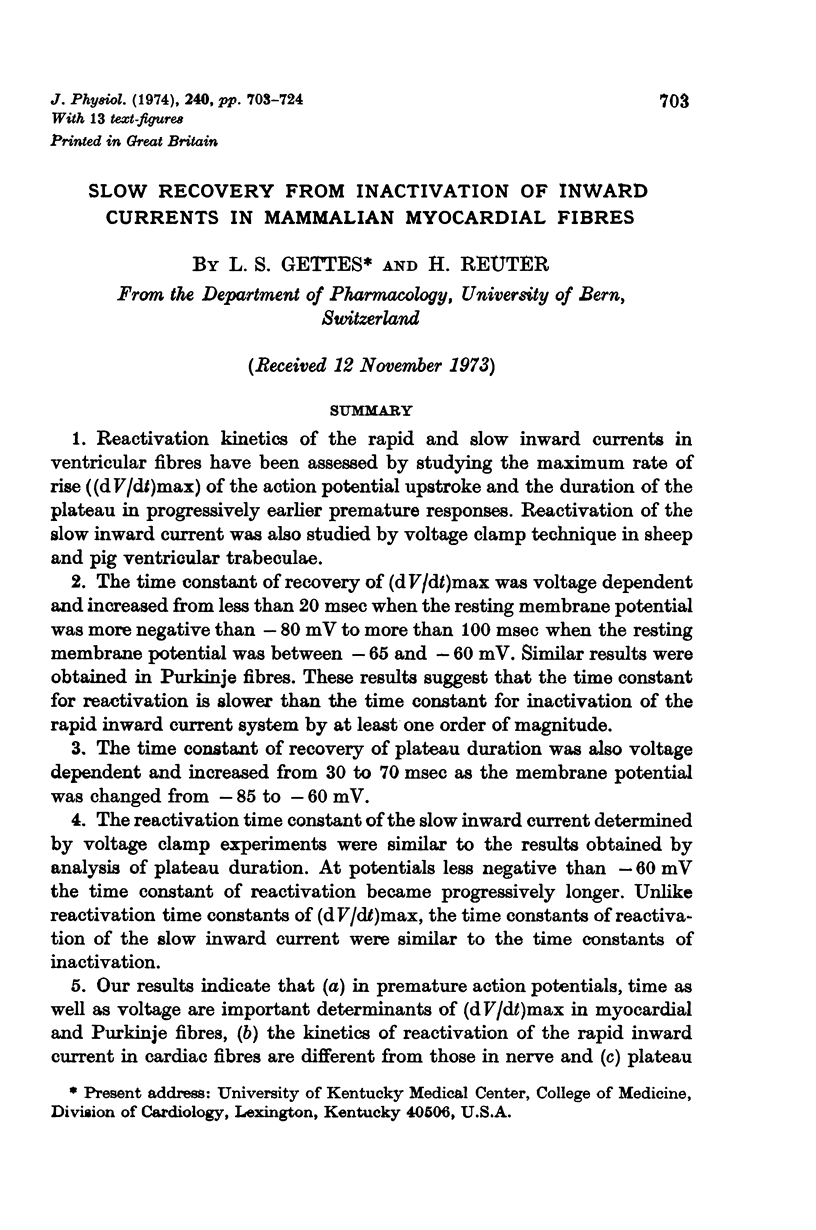
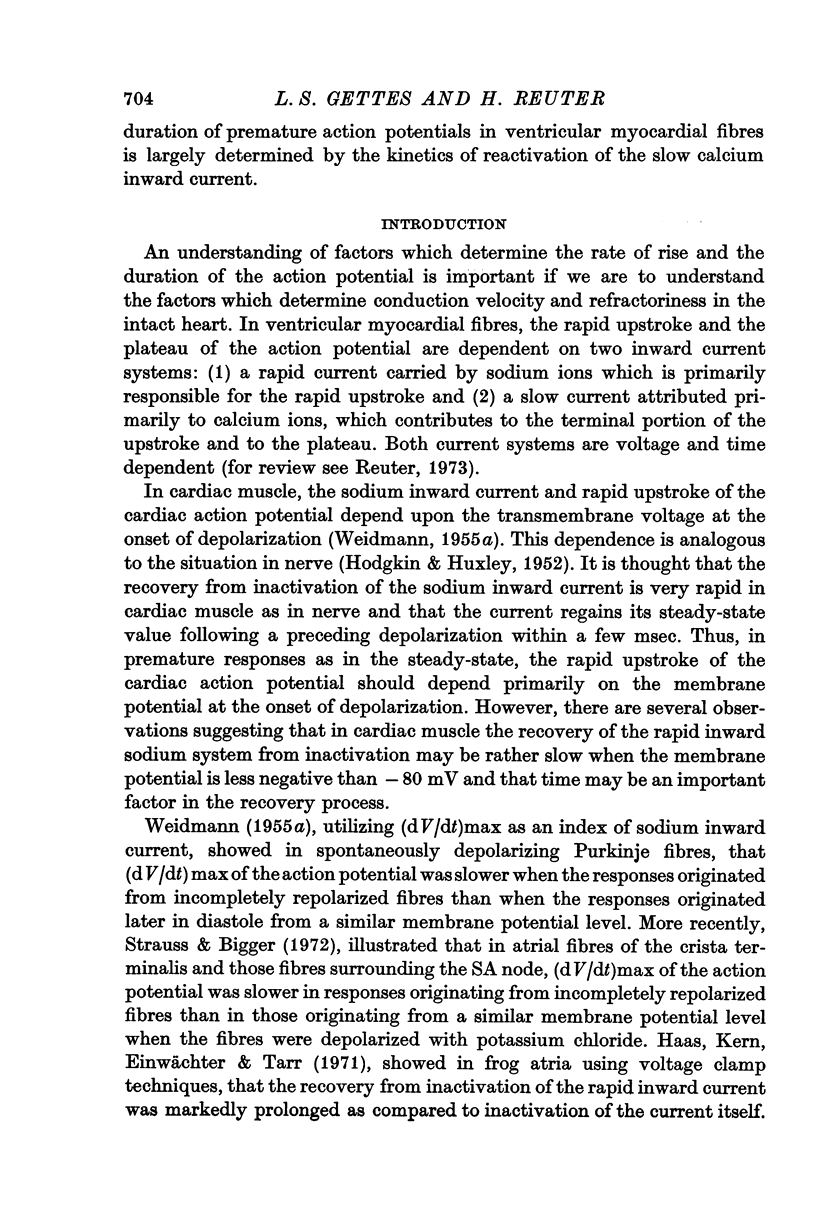
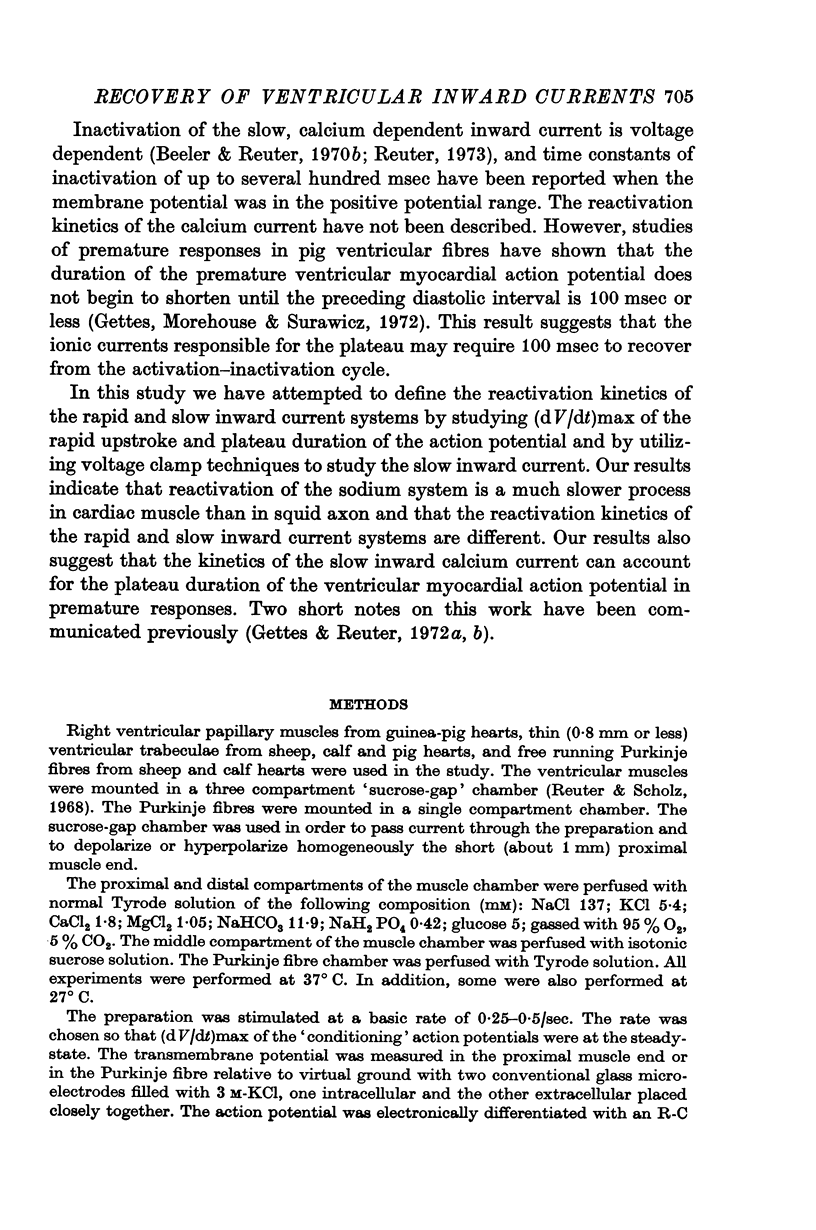
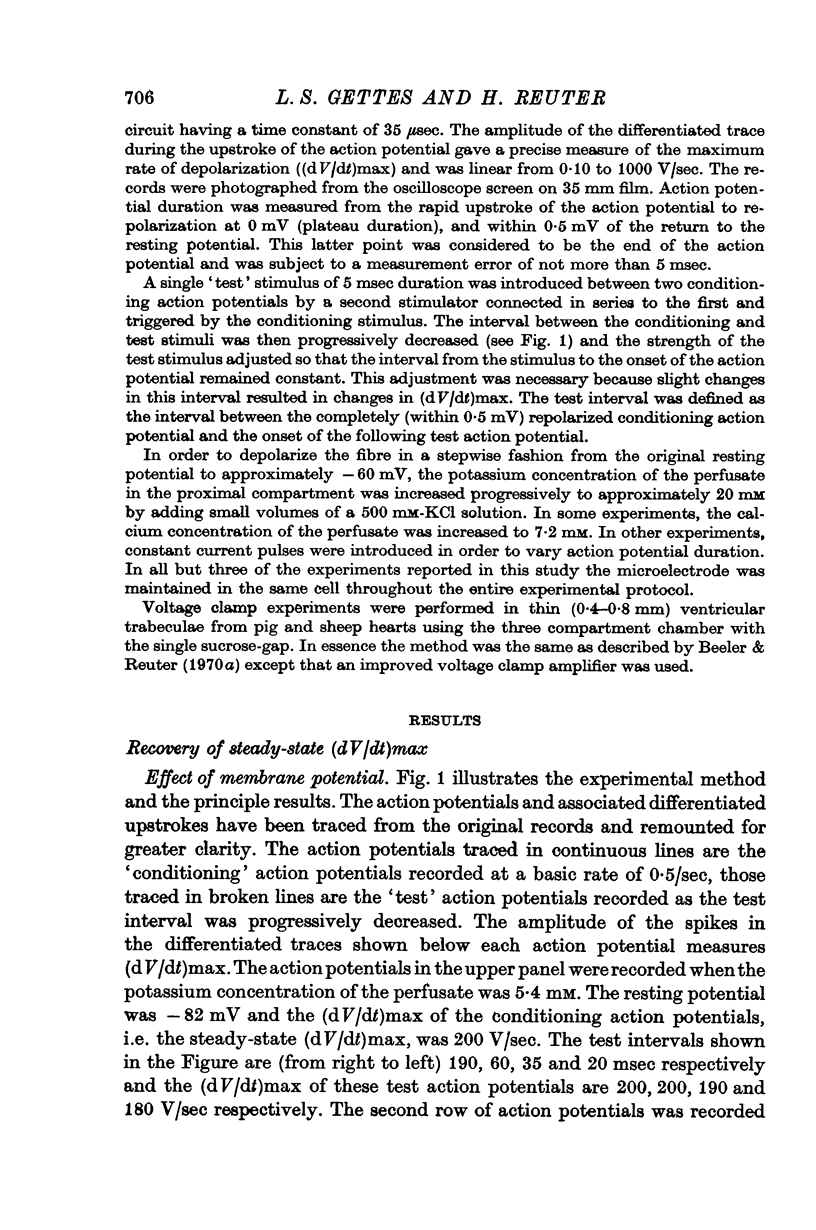
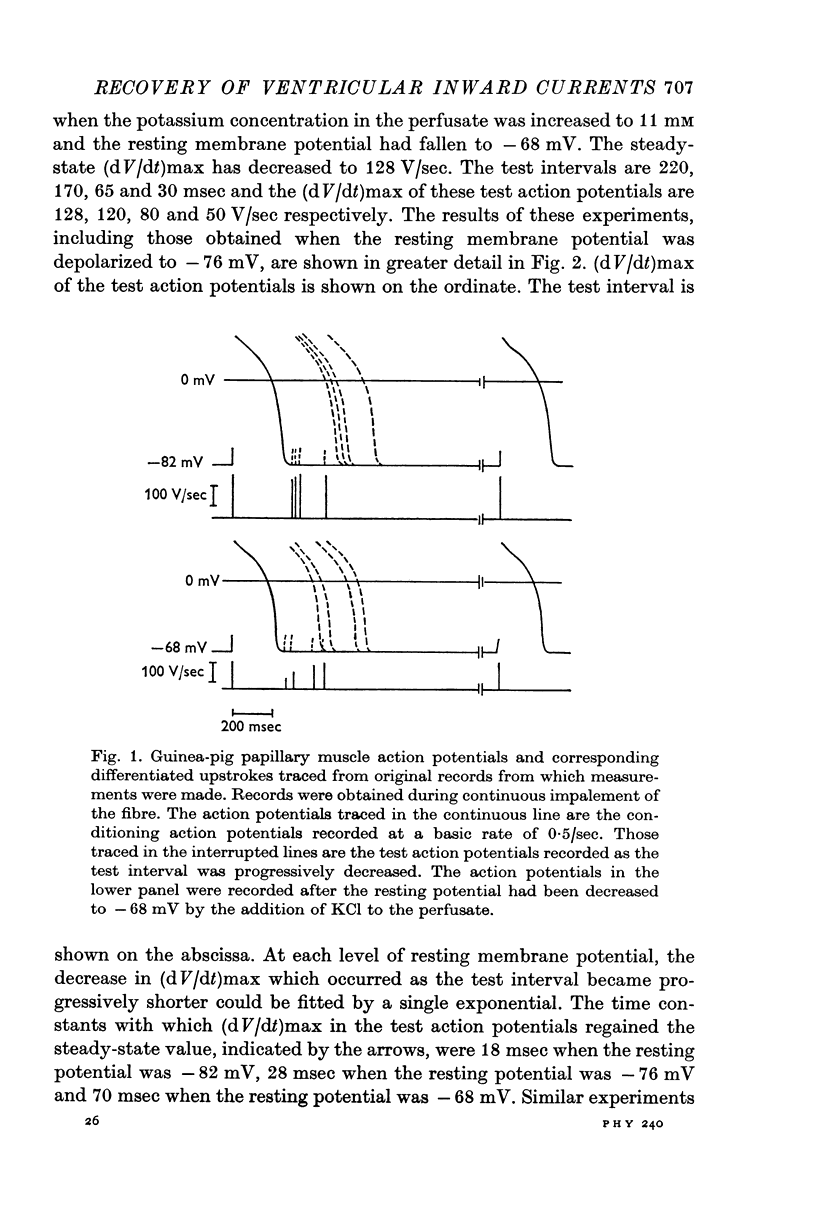
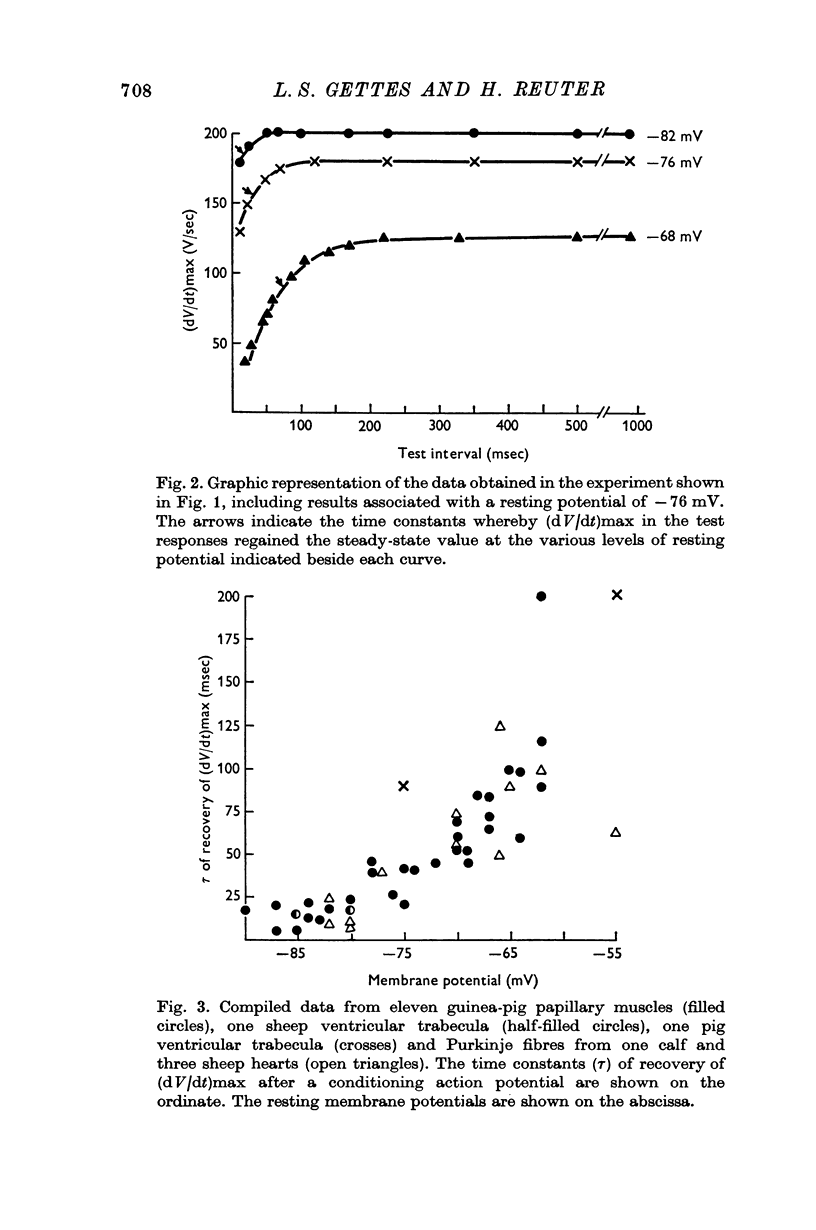
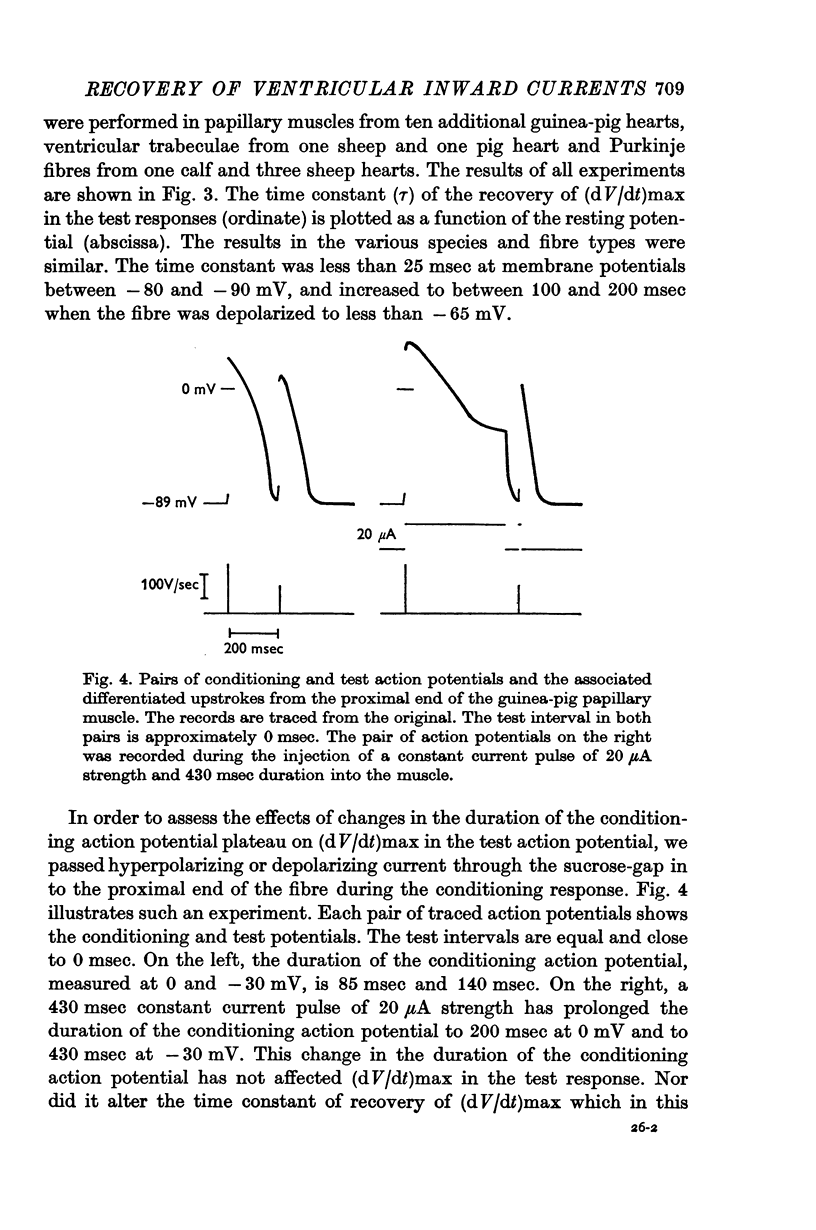
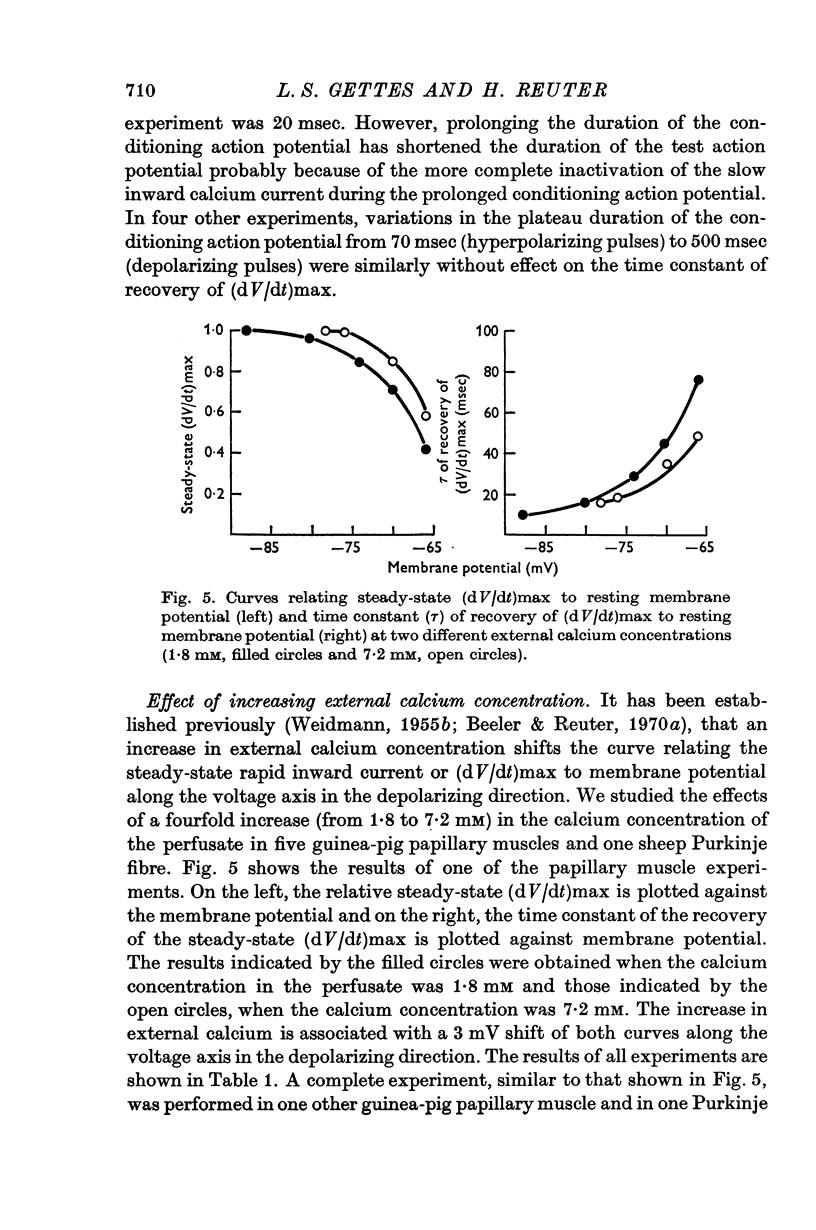
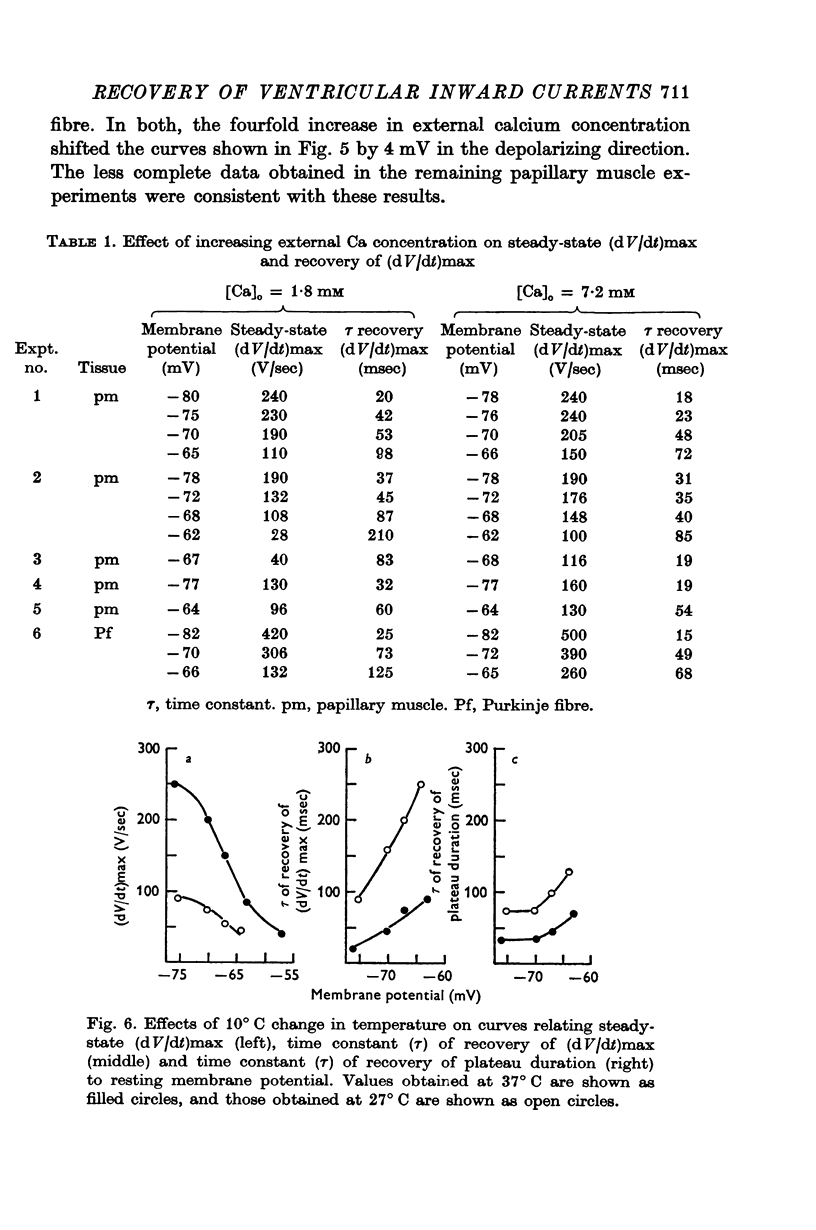
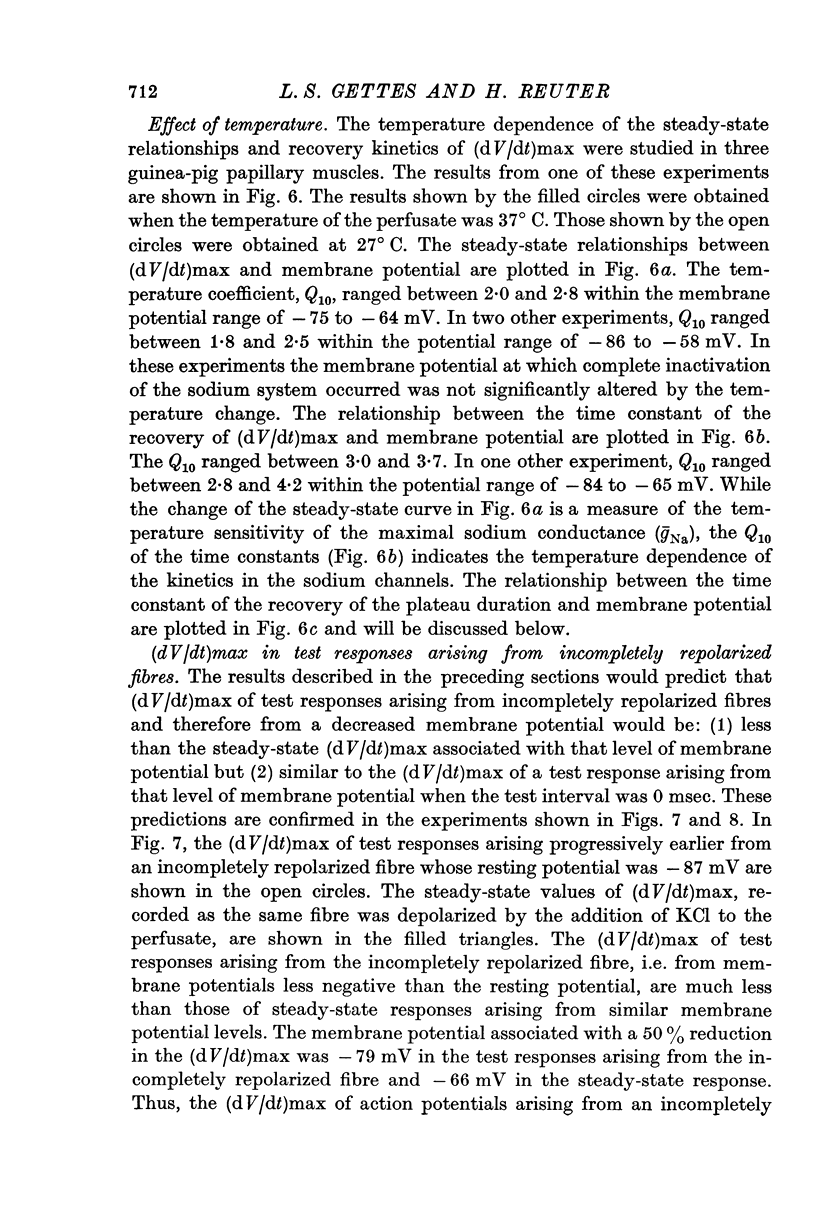
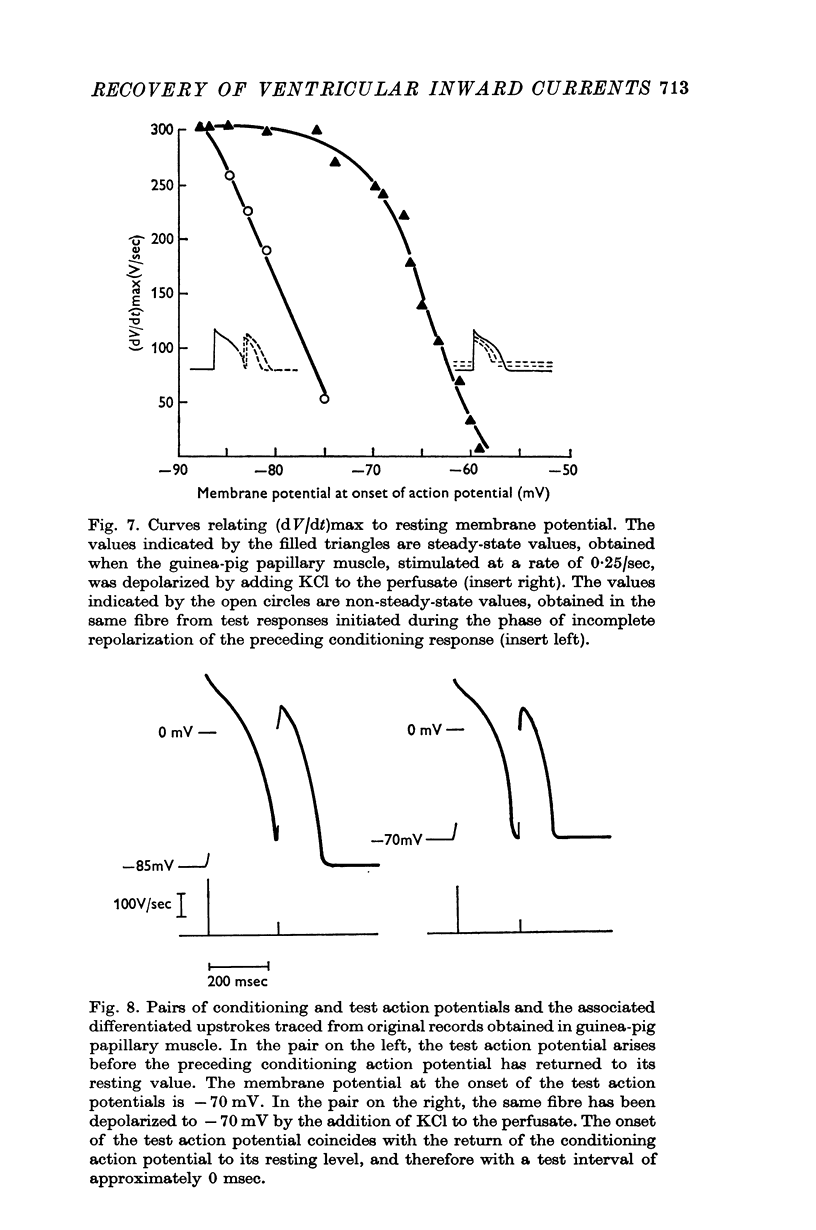
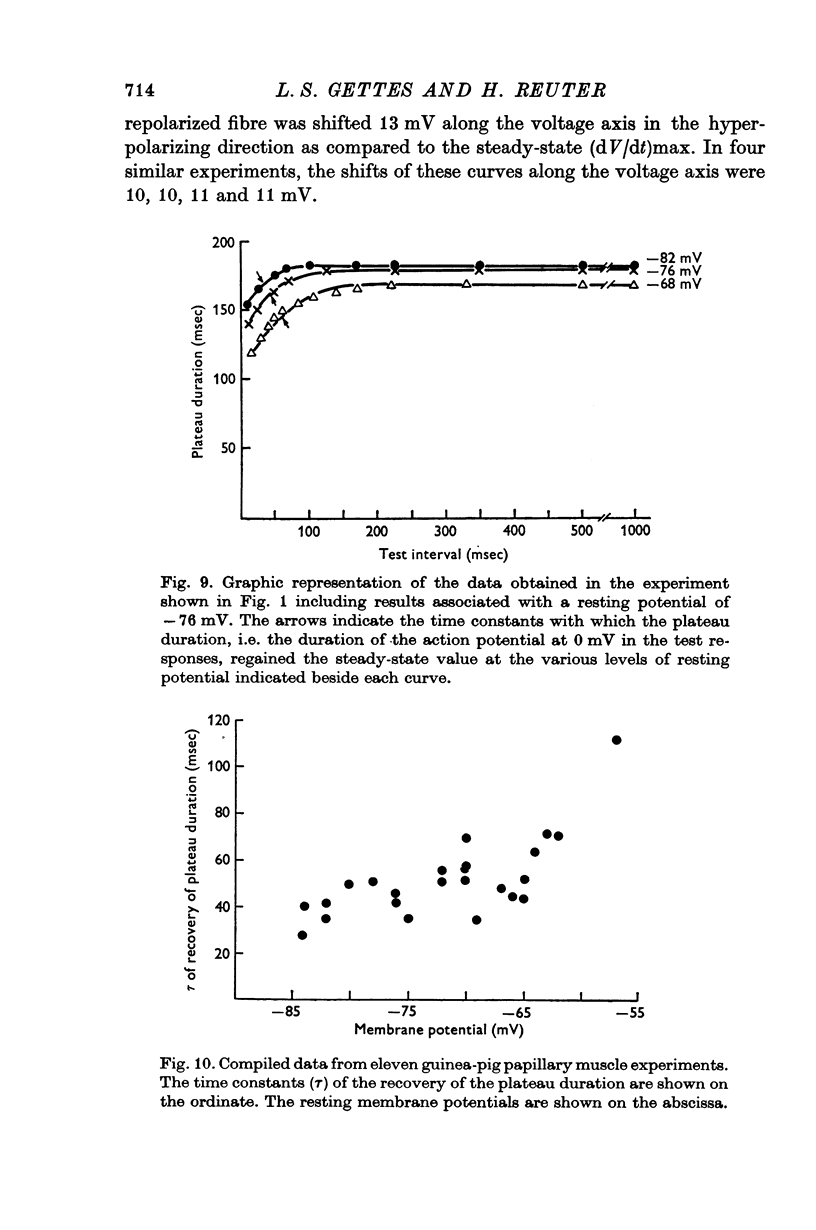
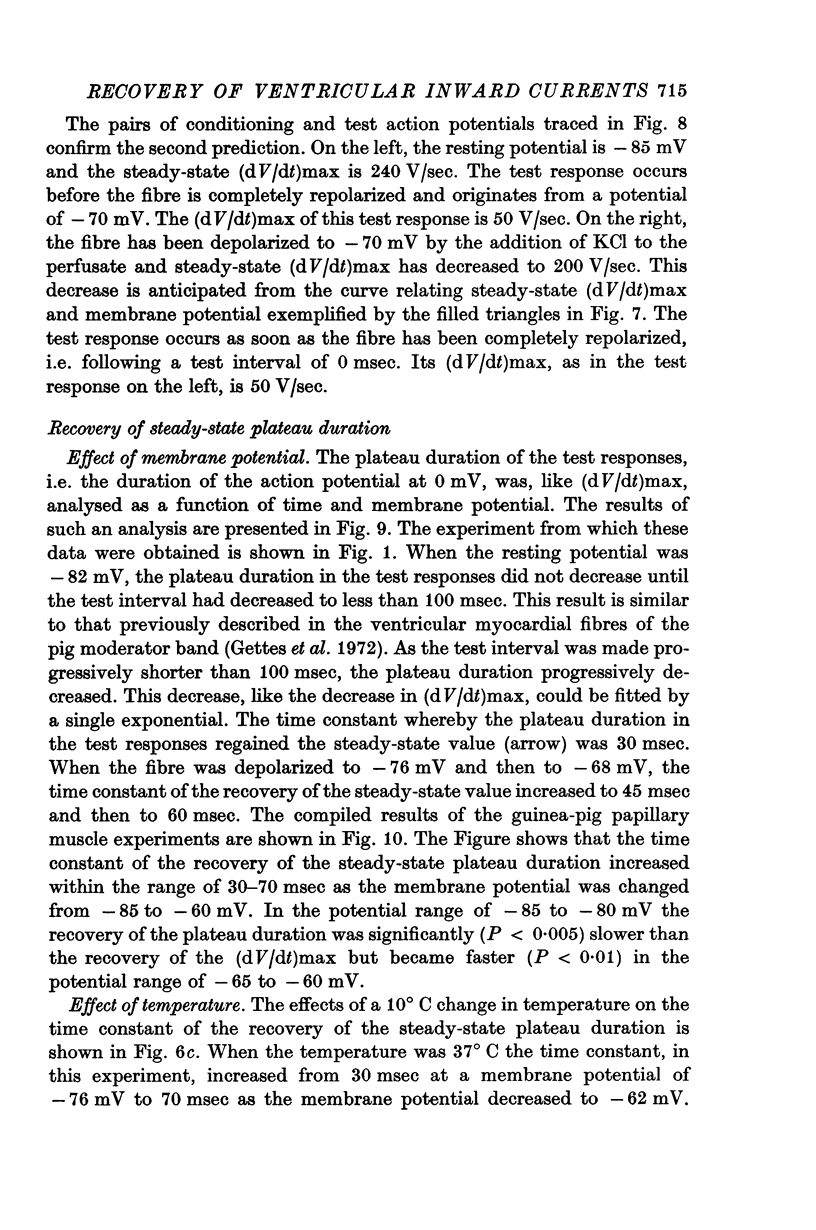
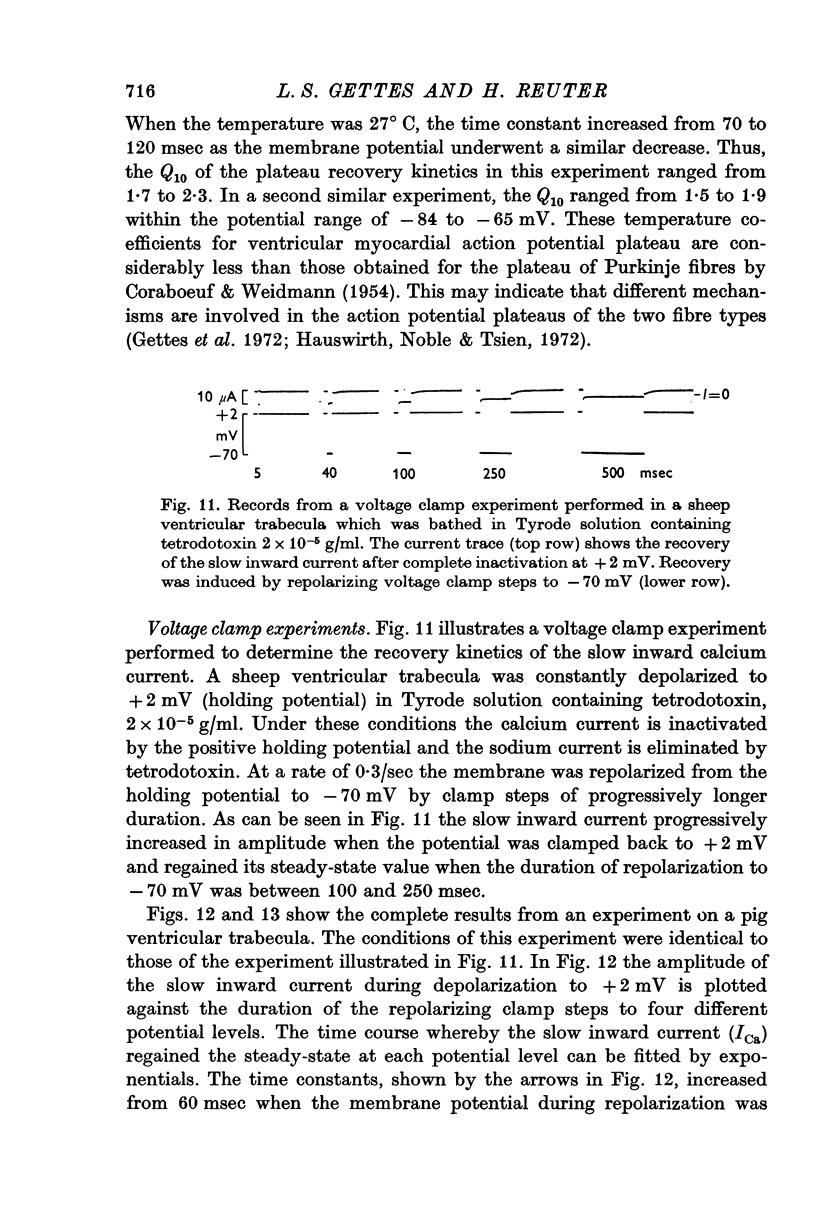
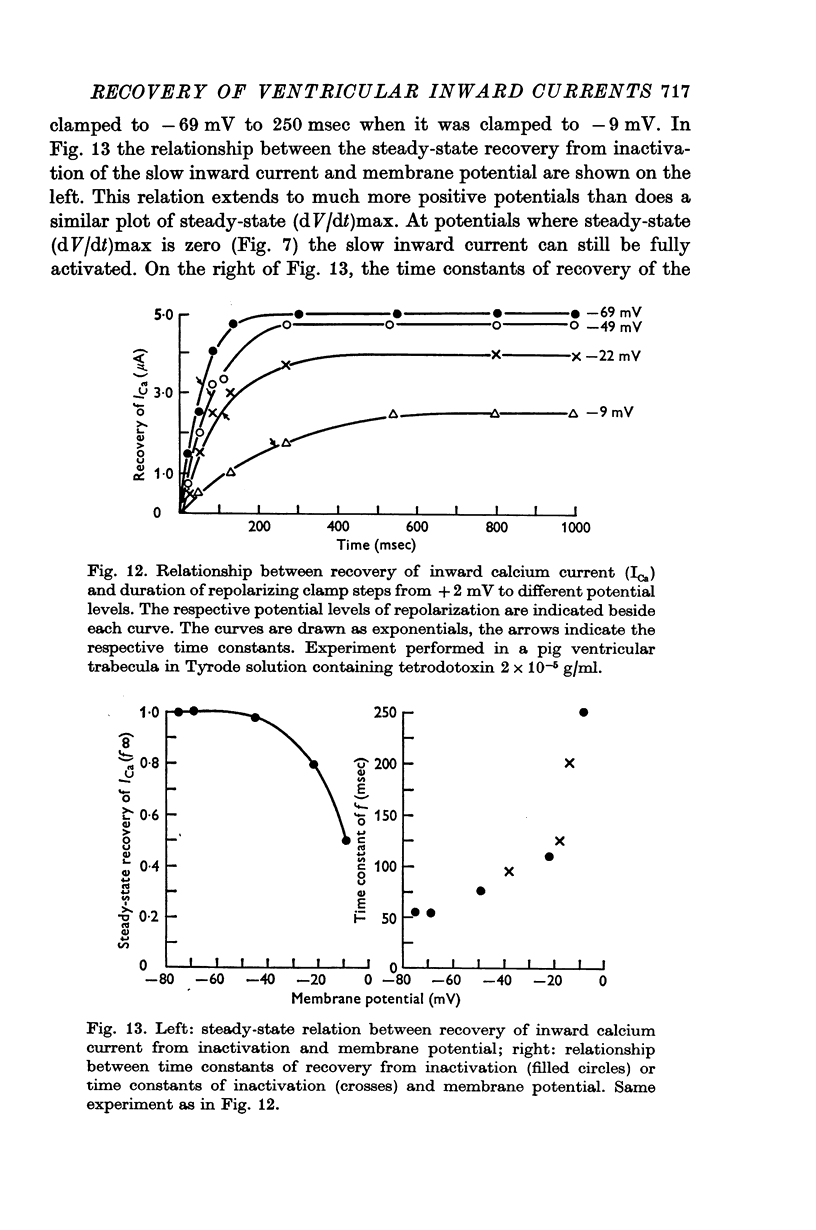
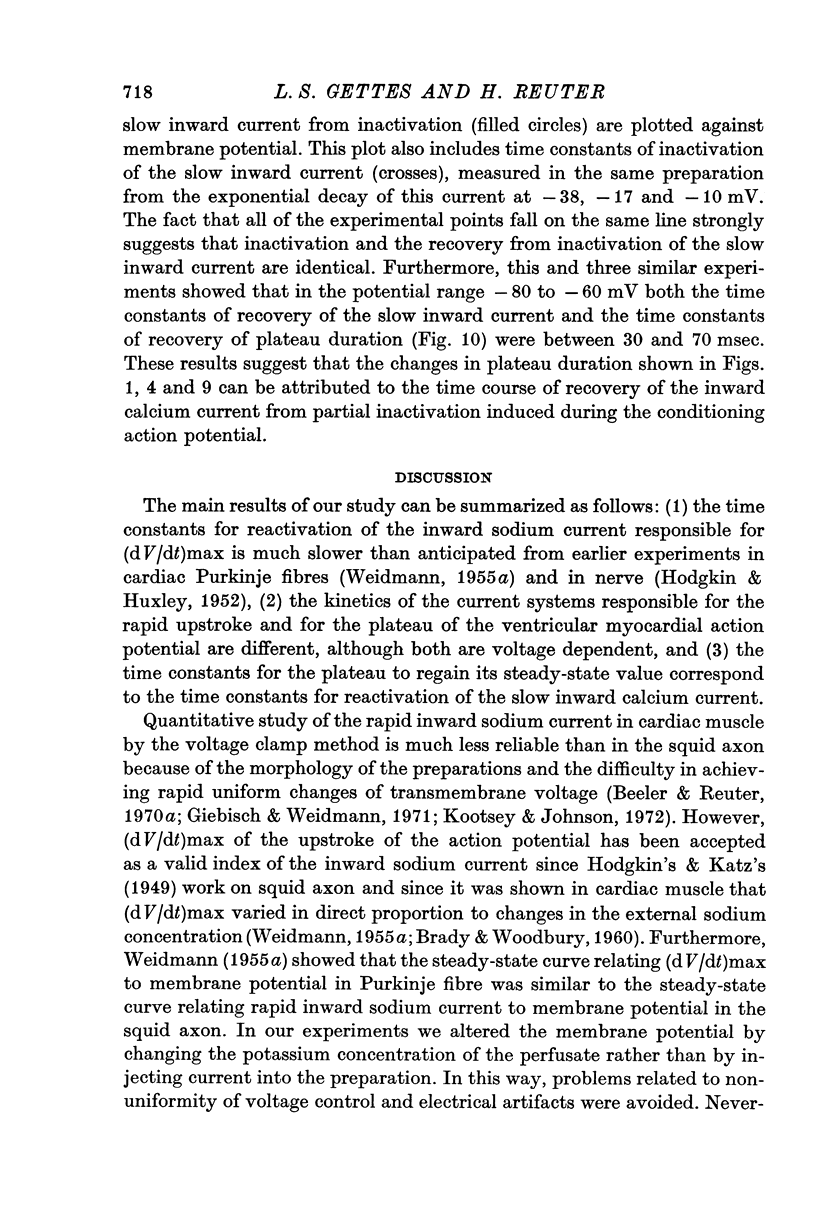
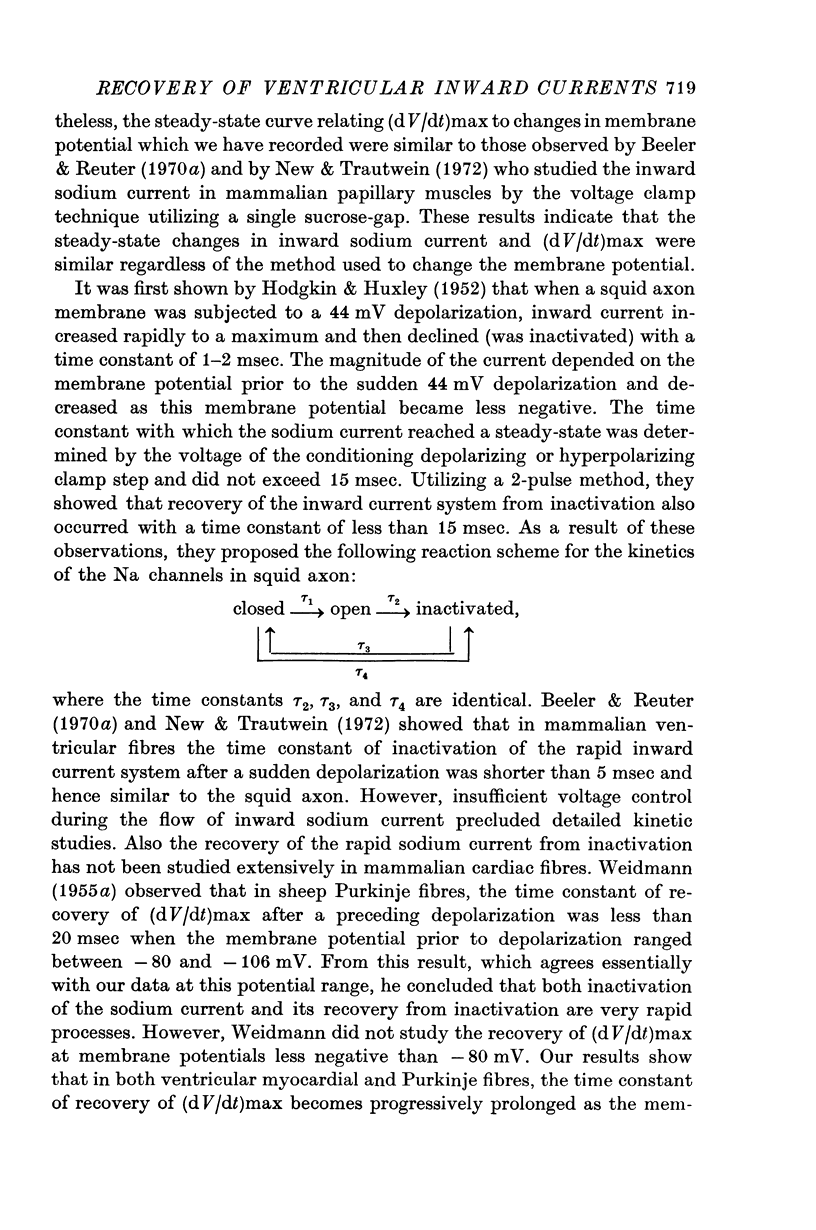
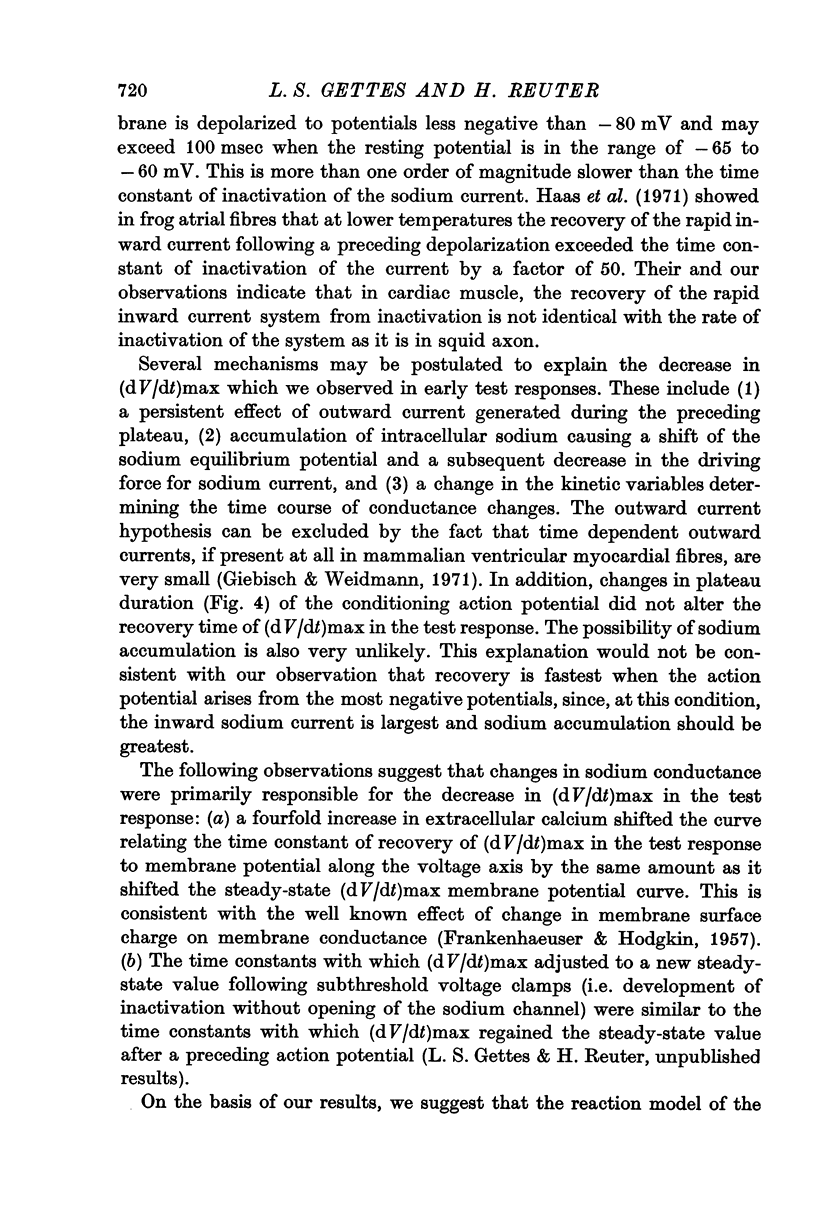
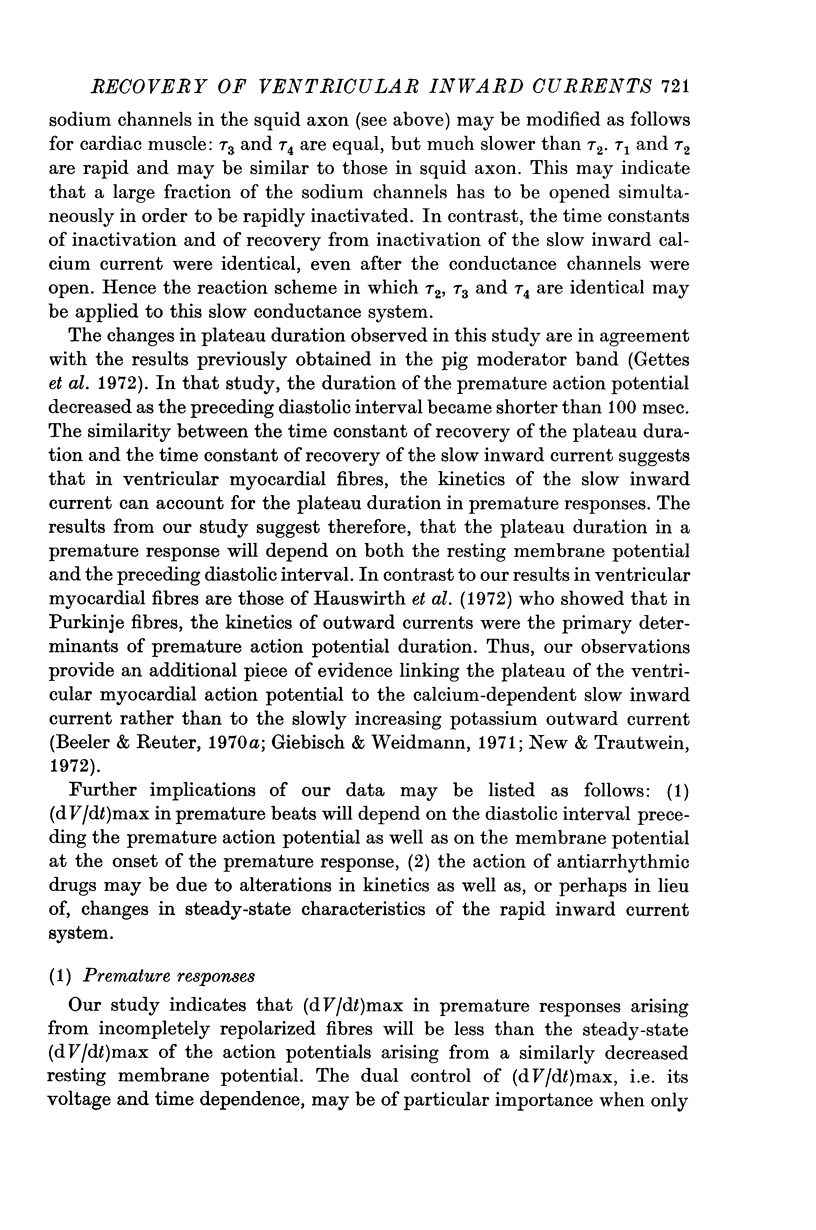
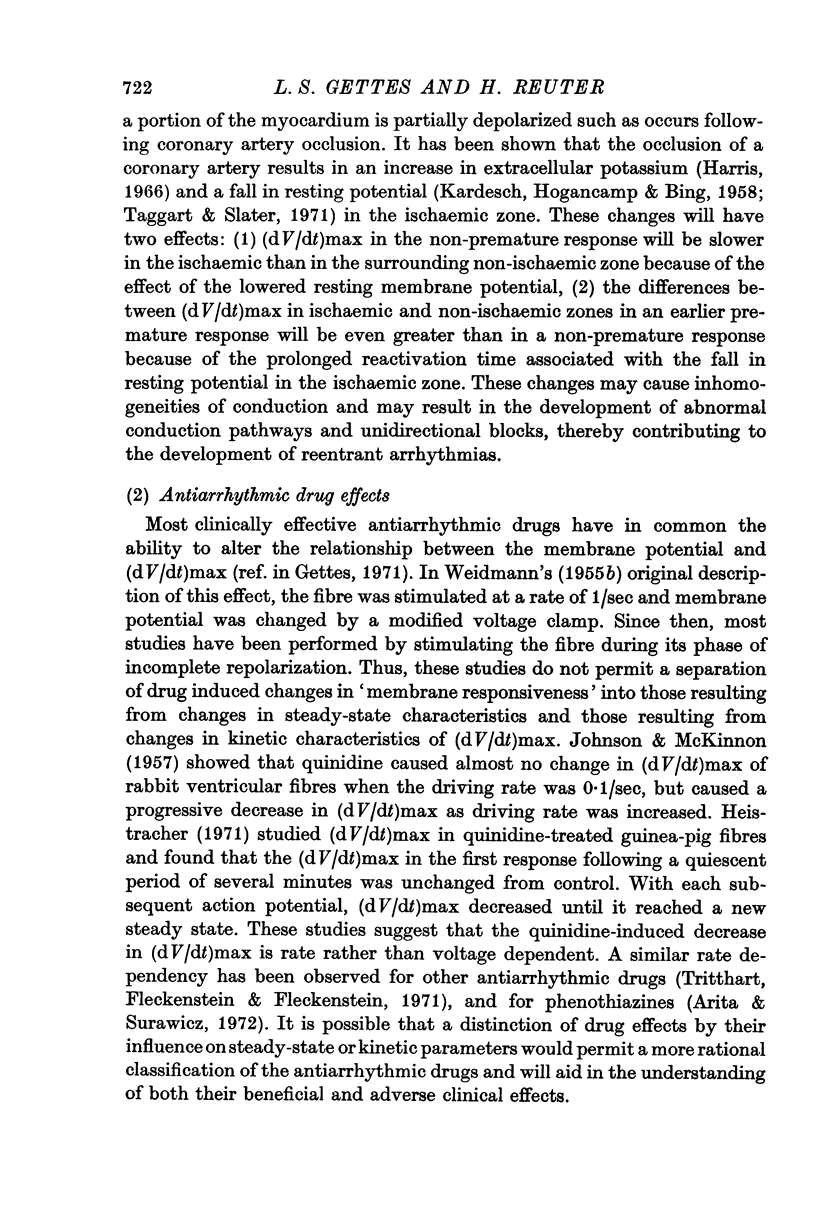
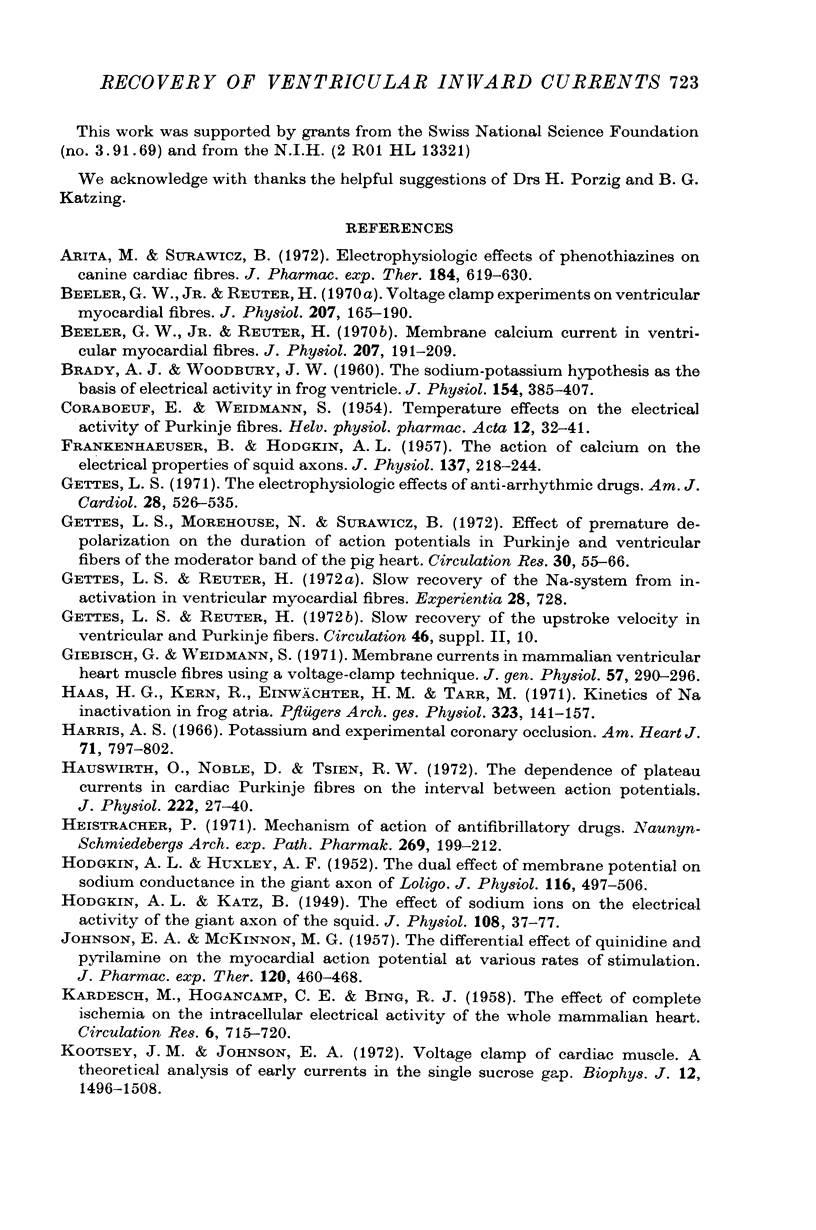
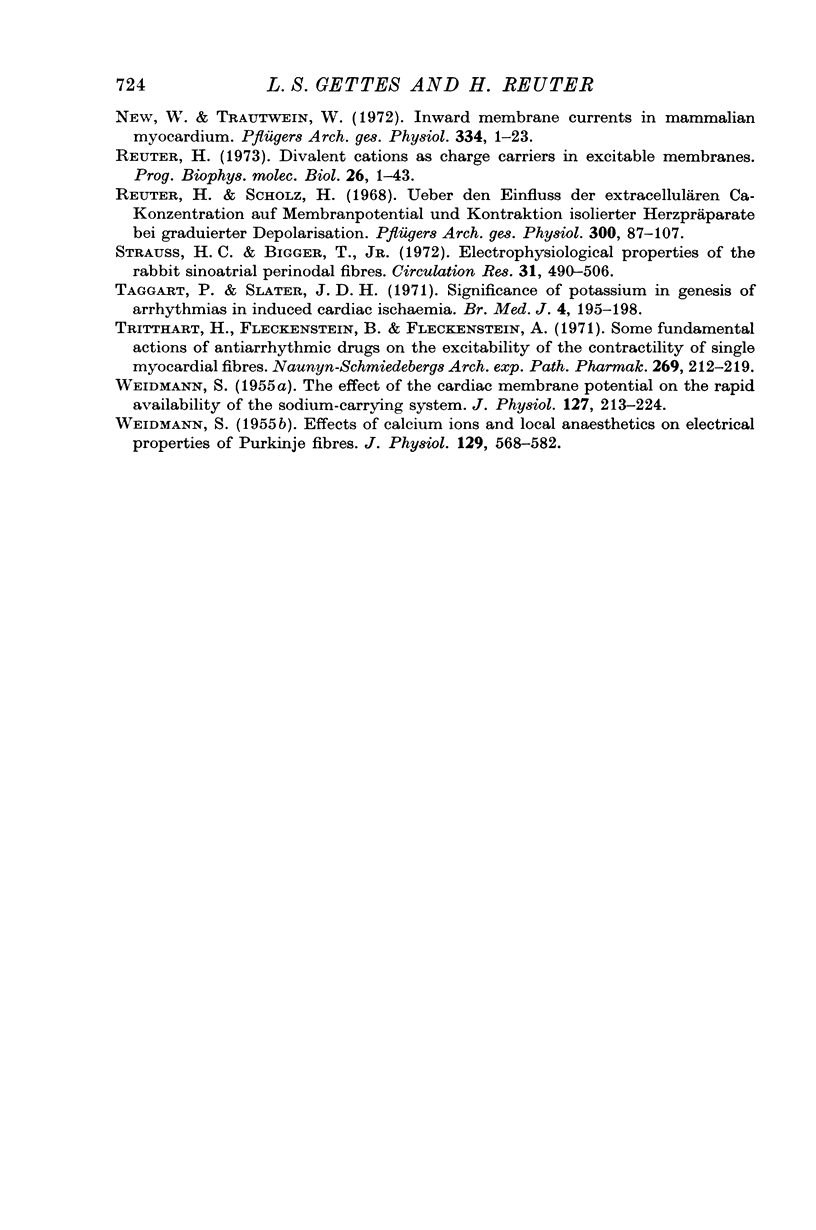
Selected References
These references are in PubMed. This may not be the complete list of references from this article.
- Arita M., Surawicz B. Electrophysiologic effects of phenothiazines on canine cardiac fibers. J Pharmacol Exp Ther. 1973 Mar;184(3):619–630. [PubMed] [Google Scholar]
- Beeler G. W., Jr, Reuter H. Membrane calcium current in ventricular myocardial fibres. J Physiol. 1970 Mar;207(1):191–209. doi: 10.1113/jphysiol.1970.sp009056. [DOI] [PMC free article] [PubMed] [Google Scholar]
- Beeler G. W., Jr, Reuter H. Voltage clamp experiments on ventricular myocarial fibres. J Physiol. 1970 Mar;207(1):165–190. doi: 10.1113/jphysiol.1970.sp009055. [DOI] [PMC free article] [PubMed] [Google Scholar]
- Brady A. J., Woodbury J. W. The sodium-potassium hypothesis as the basis of electrical activity in frog ventricle. J Physiol. 1960 Dec;154(2):385–407. doi: 10.1113/jphysiol.1960.sp006586. [DOI] [PMC free article] [PubMed] [Google Scholar]
- CORABOEUF E., WEIDMANN S. Temperature effects on the electrical activity of Purkinje fibres. Helv Physiol Pharmacol Acta. 1954;12(1):32–41. [PubMed] [Google Scholar]
- FRANKENHAEUSER B., HODGKIN A. L. The action of calcium on the electrical properties of squid axons. J Physiol. 1957 Jul 11;137(2):218–244. doi: 10.1113/jphysiol.1957.sp005808. [DOI] [PMC free article] [PubMed] [Google Scholar]
- Gettes L. S., Morehouse N., Surawicz B. Effect of premature depolarization on the duration of action potentials in Purkinje and ventricular fibers of the moderator band of the pig heart. Role of proximity and the duration of the preceding action potential. Circ Res. 1972 Jan;30(1):55–66. doi: 10.1161/01.res.30.1.55. [DOI] [PubMed] [Google Scholar]
- Gettes L. S. The electrophysiologic effects of antiarrhythmic drugs. Am J Cardiol. 1971 Nov;28(5):526–535. doi: 10.1016/0002-9149(71)90094-4. [DOI] [PubMed] [Google Scholar]
- Giebisch G., Weidmann S. Membrane currents in mammalian ventricular heart muscle fibers using a voltage-clamp technique. J Gen Physiol. 1971 Mar;57(3):290–296. doi: 10.1085/jgp.57.3.290. [DOI] [PMC free article] [PubMed] [Google Scholar]
- HODGKIN A. L., HUXLEY A. F. The dual effect of membrane potential on sodium conductance in the giant axon of Loligo. J Physiol. 1952 Apr;116(4):497–506. doi: 10.1113/jphysiol.1952.sp004719. [DOI] [PMC free article] [PubMed] [Google Scholar]
- HODGKIN A. L., KATZ B. The effect of sodium ions on the electrical activity of giant axon of the squid. J Physiol. 1949 Mar 1;108(1):37–77. doi: 10.1113/jphysiol.1949.sp004310. [DOI] [PMC free article] [PubMed] [Google Scholar]
- Haas H. G., Kern R., Einwächter H. M., Tarr M. Kinetics of Na inactivation in frog atria. Pflugers Arch. 1971;323(2):141–157. doi: 10.1007/BF00586445. [DOI] [PubMed] [Google Scholar]
- Harris A. S. Potassium and experimental coronary occlusion. Am Heart J. 1966 Jun;71(6):797–802. doi: 10.1016/0002-8703(66)90601-6. [DOI] [PubMed] [Google Scholar]
- Hausworth O., Noble D., Tsien R. W. The dependence of plateau currents in cardiac Purkinje fibres on the interval between action potentials. J Physiol. 1972 Apr;222(1):27–49. doi: 10.1113/jphysiol.1972.sp009786. [DOI] [PMC free article] [PubMed] [Google Scholar]
- Heistracher P. Mechanism of action of antifibrillatory drugs. Naunyn Schmiedebergs Arch Pharmakol. 1971;269(2):199–212. doi: 10.1007/BF01003037. [DOI] [PubMed] [Google Scholar]
- JOHNSON E. A., McKINNON M. G. The differential effect of quinidine and pyrilamine on the myocardial action potential at various rates of stimulation. J Pharmacol Exp Ther. 1957 Aug;120(4):460–468. [PubMed] [Google Scholar]
- KARDESCH M., HOGANCAMP C. E., BING R. J. The effect of complete ischemia on the intracellular electrical activity of the whole mammalian heart. Circ Res. 1958 Nov;6(6):715–720. doi: 10.1161/01.res.6.6.715. [DOI] [PubMed] [Google Scholar]
- Kootsey J. M., Johnson E. A. Voltage clamp of cardiac muscle. A theoretical analysis of early currents in the single sucrose gap. Biophys J. 1972 Nov;12(11):1496–1508. doi: 10.1016/S0006-3495(72)86177-0. [DOI] [PMC free article] [PubMed] [Google Scholar]
- New W., Trautwein W. Inward membrane currents in mammalian myocardium. Pflugers Arch. 1972;334(1):1–23. doi: 10.1007/BF00585997. [DOI] [PubMed] [Google Scholar]
- Reuter H. Divalent cations as charge carriers in excitable membranes. Prog Biophys Mol Biol. 1973;26:1–43. doi: 10.1016/0079-6107(73)90016-3. [DOI] [PubMed] [Google Scholar]
- Reuter H., Scholz H. Uber den Einfluss der extracellulären Ca-Konzentration auf Membranpotential und Kontraktion isolierter Herzpräparate bei graduierter Depolarisation. Pflugers Arch Gesamte Physiol Menschen Tiere. 1968;300(2):87–107. [PubMed] [Google Scholar]
- Strauss H. C., Bigger J. T., Jr Electrophysiological properties of the rabbit sinoatrial perinodal fibers. Circ Res. 1972 Oct;31(4):490–506. doi: 10.1161/01.res.31.4.490. [DOI] [PubMed] [Google Scholar]
- Taggart P., Slater J. D. Significance of potassium in genesis of arrhythmias in induced cardiac ischaemia. Br Med J. 1971 Oct 23;4(5781):195–198. doi: 10.1136/bmj.4.5781.195. [DOI] [PMC free article] [PubMed] [Google Scholar]
- Tritthart H., Fleckenstein B., Fleckenstein A. Some fundamental actions of antiarrhythmic drugs on the excitability and the contractility of singel myocardial fibers. Naunyn Schmiedebergs Arch Pharmakol. 1971;269(2):212–219. doi: 10.1007/BF01003038. [DOI] [PubMed] [Google Scholar]
- WEIDMANN S. Effects of calcium ions and local anesthetics on electrical properties of Purkinje fibres. J Physiol. 1955 Sep 28;129(3):568–582. doi: 10.1113/jphysiol.1955.sp005379. [DOI] [PMC free article] [PubMed] [Google Scholar]
- WEIDMANN S. The effect of the cardiac membrane potential on the rapid availability of the sodium-carrying system. J Physiol. 1955 Jan 28;127(1):213–224. doi: 10.1113/jphysiol.1955.sp005250. [DOI] [PMC free article] [PubMed] [Google Scholar]


